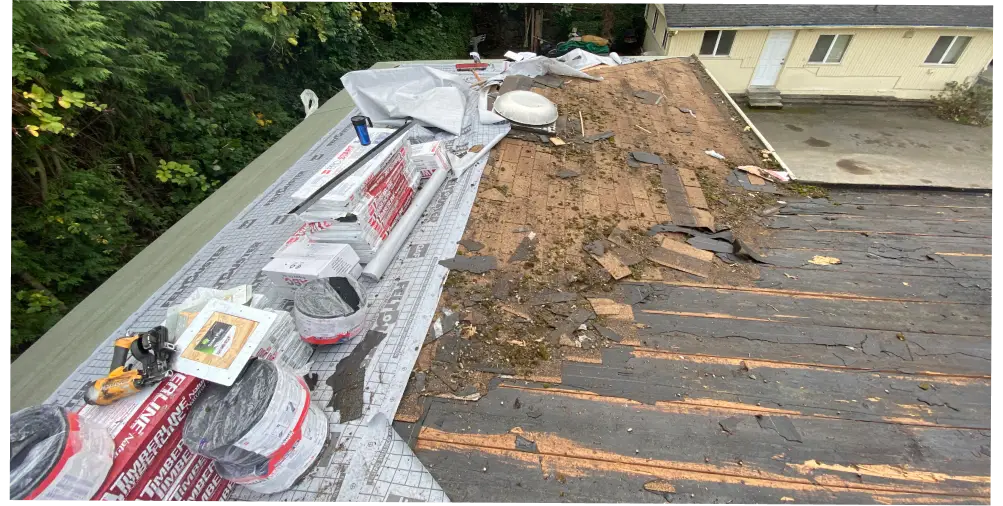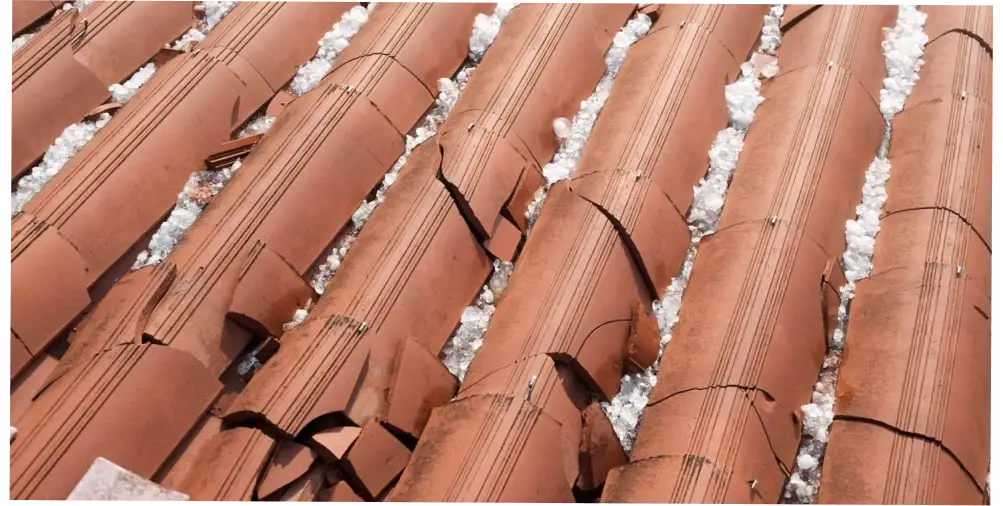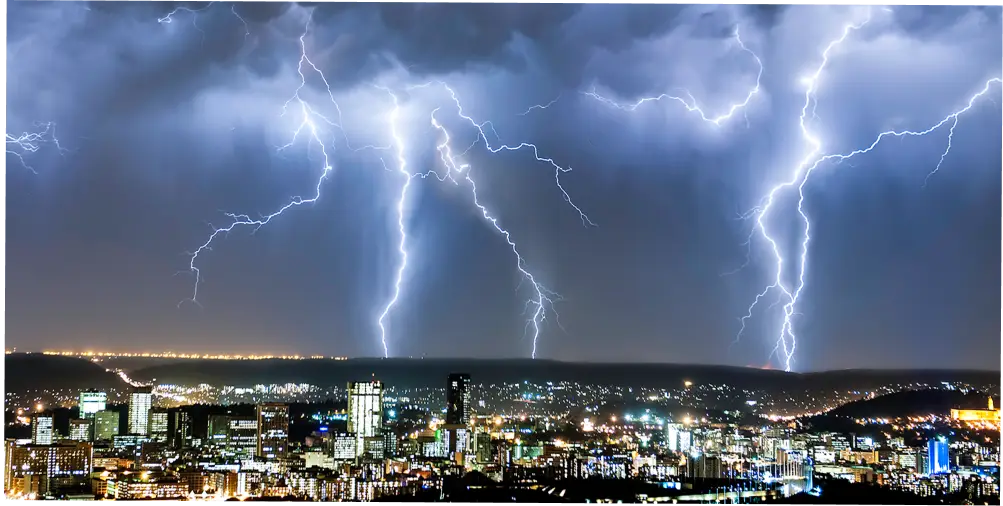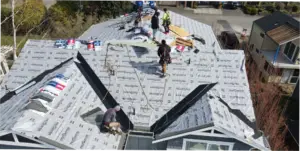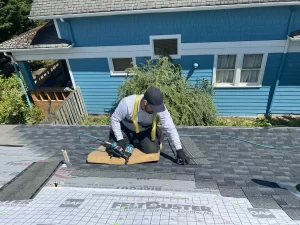Types of Roof Storm Damage
Wind Damage
A hurricane-force wind, which is defined by meteorologists as 74 mph or more, or a gale-force wind, which is 39-54 miles per hour, may cause visible damage to your home’s roof. High winds can cause shingles to lift up and blow away, exposing the underlying layers of the roof and leaving your roof vulnerable to water damage.
Shingles can be lifted and curled by sudden, powerful gusts of wind during less severe storms. To create a water-tight seal, shingles are deliberately overlapped while they’re being installed; this lifting and curling might break the seal, leaving your roof vulnerable to wind-driven rain.
Rain Damage
It’s no secret that rain can cause problems for your roof. If your roof doesn’t have proper drainage, standing water can be a major issue after a big storm. And if your gutters are clogged, rainwater can back up under your shingles, which could lead to moisture penetrating the underlayment or roof deck. These problems can be expensive to fix, so it’s important to take preventive measures to protect your roof. One way to do this is to make sure that your gutters are clean and in good condition.
Hail Damage
While hailstorms are relatively short, the hailstones they produce can cause serious damage to roofs. Shingles are designed to protect against rain and sun damage, but hail can dent or pockmark them, and knock loose the granules that provide additional protection. It can break shingles and cause them to become loose or fall off completely. This can ruin the beautiful appearance of your roof’s surface.
Hailstorms may be a source of dread for many individuals, and their destructive impact on a roof or family automobile might cost hundreds or even thousands of dollars in repairs.According to Angi and HomeAdvisor, The cost of hail damage repair varies from $350 to $50,000, with the national average at $10,032.
Fallen Trees or Limbs
Debris may accumulate on the top of your roof during a severe storm, ranging from little twigs to entire tree limbs. Large objects can dent or impact the surface of your shingles, leaving that area of your roof vulnerable to moisture intrusion, while lighter branches may not pose as much of a problem. Nevertheless, it is important to clear any debris from your roof after a storm in order to avoid any potential damage.
Related article: Is Tree Damage to my Roof Covered by Insurance?
How to Diagnose Roof Storm Damage
If you think your roof may have sustained damage from a recent storm, it’s important to get a professional inspection as soon as possible. The sooner you can identify and repair any damage, the better. Here are some signs to look for that may indicate storm damage:
- Missing or damaged shingles
- Buckling, curling, or lifting shingles
- Granules from shingles in your gutters
- Cracked or broken shingles
- Holes in your roof
- Leaks in your home
- Sagging roof deck
- Dented gutters or downspouts
Damage from storms? We can help!
If you suspect that your roof has sustained storm damage, it’s important to have it inspected by a professional as soon as possible. Depending on the extent of the damage, repairs or replacement may be necessary. Ignoring storm damage can lead to further problems down the road, so don’t delay getting your roof checked out.
If you’re in need of storm damage repair, look no further than the professionals at Near Me Roofing. We specialize in repairing roofs that have been damaged by high winds, hail, and other severe weather conditions. No matter the extent of the damage, we can help. We offer a free consultation to assess the damage and determine the best course of action. We’ll work with your insurance company to make sure you get the coverage you’re entitled to. Whether you need emergency repairs after a storm, or you are looking for a new roof, we can help. Contact us today for a free estimate. We look forward to serving you.

